Dollars and sense: News and views from the Canadian trade shows
by charlene_voisin | October 1, 2015 9:00 am
By Jacquie De Almeida
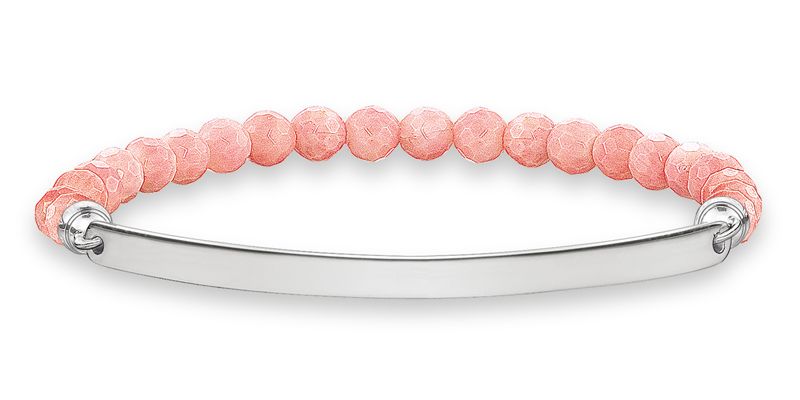 [1]
[1]The yellow gold bracelet wedged partway up Hande Elmaagacli’s left arm is an eye-catcher not only for its deep, rich colour, but also for its handwoven construction.
A family heirloom, the 22-karat yellow gold piece was given to her six years ago by her mother on her wedding day. It’s the same one her mom received from her own mother when she walked down the aisle. And when Elmaagacli has a daughter of her own someday, it will be hers, too.
It’s a family tradition that dates back to 1915 when Elmaagacli’s great-grandfather bought a similar bracelet for his betrothed. It’s also at the heart of Haseer Heritage and the collection of handwoven bracelets, rings, earrings, and necklaces on display at Elmaagacli’s booth at CJExpos-Toronto, the second in the lineup of Canada’s jewellery trade shows. Retailers also stocked up on last-minute purchases at the Canadian Jewellery Group (CJG) show, CJ Expos-Edmonton, and Expo Prestige.
“Jewellery needs to have a story and ours goes back to our family roots,” Elmaagacli tells Jewellery Business. “We don’t just present this as a piece of jewellery, but as our family heritage and something to pass on from generation to generation.”
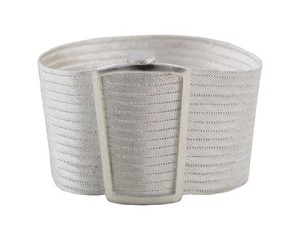 [2]
[2]Depending on the number of rows, it can take Haseer Heritage’s weavers in Turkey up to 20 days to make a bracelet from 0.30-mm silver or gold string, says Elmaagacli, who co-founded the company with her sister, Gizem Yilmaz. The more rows in a piece, the more time it takes to make. And given the metal softness required to weave the string with a specialized crochet needle, only 22- or 24-karat gold or pure silver will do.
“You have to be an expert to achieve the perfection of the weave,” she explains, adding that haseer means ‘mat’ in Turkish. “If you make a mistake, you have to unravel it to that point and do it over.”
No doubt, labour-intensive jewellery can be pricey. However, brands like Haseer Heritage are banking on craftsmanship, quality, and a compelling brand story to sway consumer sentiment during the critical holiday shopping season. At this article’s writing, the latest figures showed the Bloomberg Nanos Canadian Confidence Index had fallen to 53.4 in the week ending July 24, the lowest it’s been since May 2013.
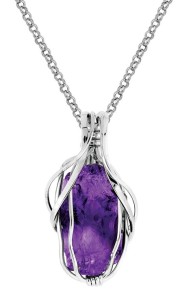 [3]
[3]The higher cost of finished products and raw materials purchased in U.S. dollars is one of the reasons Toronto-based bridal manufacturer T & T Jewellers is promoting lighter and finer platinum engagement rings. The goal is to offer consumers the cachet of the precious metal without the sticker shock associated with heavier pieces.
“Customers like platinum, but it’s really expensive, so we came up with designs that are a little finer to hit a price point that is much more affordable,” says Caroline Skilich from her booth at the Canadian Jewellery Group (CJG) show.
“When it comes to a simple solitaire, the price for a platinum mount can be more than $1000 and that alone kind of scares off customers. Retailers should have a selection of platinum rings at lower price points in their stores, so they have something different to present to consumers.”
Categories like bridal and custom design tend to do better than others during tough economic times, but consumer financing options using in-store credit cards can also help close a deal or upsell a client, says Alex Forsyth, national sales director for Wellspring Financial.
“They allow access to more financing, so customers can get a bigger engagement ring,” he explains. “If a client’s budget is $1000, but what they really want costs $2000, shifting the conversation to a monthly installment of $100 can make the purchase more affordable to them. It can also put the jeweller in a position where they can increase their sales and customer loyalty.”
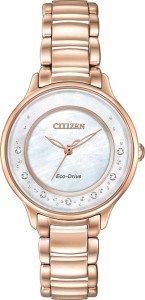 [4]
[4]Rob Gross, head of business development for Master Design Jewels, says one tactic it is using is to offer product on memo. While some in the industry have been critical of this kind of program, Gross says it can be effective, given the retailer then “has skin in the game.” In the case of one of the lines Master Design Jewels distributes, a $2000 product buy-in provides the retailer a $1000 credit against additional purchases after they’ve bought $1000 worth of jewellery.
“There are intrinsic problems with memo when the retailer gets product for nothing, since they won’t push those items,” Gross explains. “But you’re naturally going to push the product where you have an investment in it.”
J. David Ritter, president and chief executive officer (CEO) of Canadian Jewellers Association (CJA), says the sentiment among the retailers he’s talked to across the country varies. Major independents seem to be weathering the storm, while smaller independents are surviving on repair and lower price points.
“There’s still nervousness in the marketplace in terms of what’s going on,” Ritter says. “The first couple of months of the year were okay, but then it slowed right down. In Toronto, people thought the Pan Am games would be great for sales and they weren’t. Retailers in B.C. say they’re having a great year, but Alberta isn’t doing so well because of the oil crisis.”
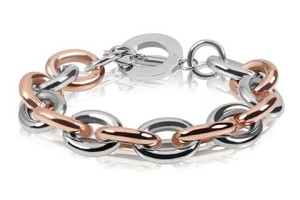 [5]
[5]Ritter says the tough jewellery landscape highlights the importance of education and training among sales associates, who, in the majority of cases, are going head to head with consumers who have done hours of research before stepping foot in a store. Seminars and other training methods have their cost, but when compared to the lost opportunity of not making a sale or the accumulated effect of that over a period, the benefits are clear, he says.
“Getting a sale an employee wouldn’t have gotten previous to training is worth the investment, as the associate is more comfortable in terms of selling and engaging the consumer,” Ritter explains. “You have to have confidence on both sides of the counter.”
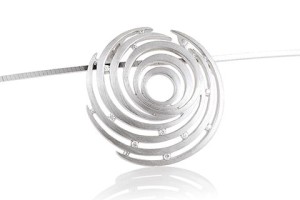 [6]
[6]Ash Tehrani, director for Toronto renovation firm, Direct Global Trade, says investing in a business when sales are slow can be a difficult decision to make. Renovating a store, for example, can be a significant undertaking both in time and expense. However, sprucing up displays or creating better traffic flow within a store can help attract clients, Tehrani explains.
He recalls one recent project involving a store with a wall dedicated to giftware, even though watches and bridal accounted for the majority of sales. Rather than bringing in more displays for engagement and wedding rings, Tehrani suggested adding chairs to the store’s bridal section to create an intimate selling experience. “The couple would be able talk more freely and feel more comfortable,” he explains. “You can use a store’s design to create a more enjoyable selling experience.”
Anita Agrawal of Toronto’s Best Bargains says retailers have to present consumers with a value proposition that touches on the longevity a piece of fine jewellery can offer to help influence spending.
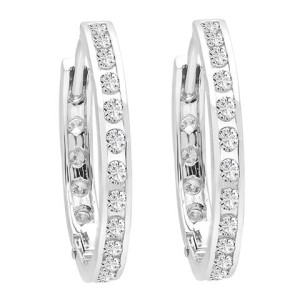 [7]
[7]“People in their 40s aren’t buying fine jewellery,” she says. “Instead, they’re buying costume jewellery. High-end jewellery always sells because there is a demographic of elite buyers that will purchase it, but as an industry, we haven’t given the average person a value proposition as to why they need to buy jewellery. Maybe we need to give people a list of the 10 essential pieces of jewellery every woman needs, such as pearl studs, diamonds studs, diamond ring, birthstone earrings and ring, a locket, and gold and silver chains, and then talk about why they need it.”
The watch category also appears to be struggling. According to the Federation of the Swiss Watch Industry (FH), exports in June were up 3.3 per cent compared to June 2014. The first six months of 2015, however, saw an increase in exports of only +0.40 per cent compared to the same period last year. The fashion watch sector is also experiencing a decline. While some may debate the impact of the Apple Watch on the sale of traditional timepieces, others point to the fact younger consumers have grown up unaccustomed to wearing watches to tell time, relying instead on smartphones.
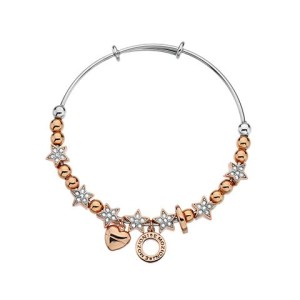 [8]
[8]Joel Bixenspanner, head of the e-commerce department for Embix Watch Importing in Montreal, says having the right brand at specific price points can help create demand for certain lines over others.
“When the higher-end price point of a brand matches the lower-end price point of a more recognizable brand, the customer tends to decide on the more recognizable brand even though they may be getting fewer features,” Bixenspanner says. “They want the watch their friends will [be impressed by].”
Fashion watch brands that offer apparel also appear to be a bigger draw for consumers. “They want the watch that matches the t-shirt or jeans they’re wearing,” he adds.
Jay Cameron, vice-president of sales and marketing for Fiori Canada, says Internet sales are cutting into retailers’ bottom lines.
“The watch business is unique in this respect because people can specify a model number, look it up online, and see where they can get it for the cheapest price,” he explains, adding the weakened Canadian dollar is further aggravating the situation. Distributors like Fiori Canada are purchasing stock at 30 per cent more than a year ago and being forced to take smaller margins so as not to appear over-inflated against Internet suppliers.
“Taking smaller margins hurts, but doing so can create loyalty among retailers, as they can see the value of a company that is helping them to be competitive,” Cameron adds.
The end of the summer shows paves the way for the busy holiday shopping season.
- [Image]: http://www.jewellerybusiness.com/wp-content/uploads/2015/11/THOMAS-SABO_Love-Bridge_HW2015_LBA0001-590-9.jpg
- [Image]: http://www.jewellerybusiness.com/wp-content/uploads/2015/11/Haseer-Heritage-bracelet28.jpg
- [Image]: http://www.jewellerybusiness.com/wp-content/uploads/2015/11/Cadoryn-Amythest_utopiaMSRP259.jpg
- [Image]: http://www.jewellerybusiness.com/wp-content/uploads/2015/11/Citizen-EM0382-86D.jpg
- [Image]: http://www.jewellerybusiness.com/wp-content/uploads/2015/11/ARZ-Group-SSB229R_6x4.jpg
- [Image]: http://www.jewellerybusiness.com/wp-content/uploads/2015/11/Breuning-31_04506.jpg
- [Image]: http://www.jewellerybusiness.com/wp-content/uploads/2015/11/Global-Diamond-Montreal-1100-0042_6X6.jpg
- [Image]: http://www.jewellerybusiness.com/wp-content/uploads/2015/11/Emozioni-DC145.jpg
Source URL: https://www.jewellerybusiness.com/features/dollars-and-sense-news-and-views-from-the-canadian-trade-shows/